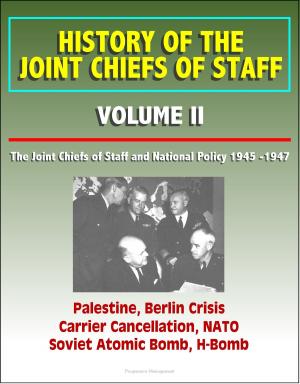Explosive Accident Summary: World War II - Foundation of Ordnance Safety Program, Log of Major Accidents in Second World War, Plant Disasters, Ship Explosions, Reporting Future
Nonfiction, History, Military, Weapons, World War II| Author: | Progressive Management | ISBN: | 9781370178704 |
| Publisher: | Progressive Management | Publication: | August 28, 2016 |
| Imprint: | Smashwords Edition | Language: | English |
| Author: | Progressive Management |
| ISBN: | 9781370178704 |
| Publisher: | Progressive Management |
| Publication: | August 28, 2016 |
| Imprint: | Smashwords Edition |
| Language: | English |
Professionally converted for accurate flowing-text e-book format reproduction, this unique book provides a summary of World War II explosive accidents appeared which may be of interest to the field. While the explosions listed in this collection are not presented in depth, many are detailed in the classic abstracts written in the 1940's by the Office, Chief of Ordnance. They are the foundation upon which the Ordnance Safety Program was built. Many of these disasters may not be familiar even to those who served.
The Safety and Security Branch of the Office, Chief of Ordnance, located in Chicago, in the early 1940's published 135 accident abstracts, detailing the causes, effects and corrective actions for explosive accidents occurring in the ammunition plant complex during the war years between 1941 and 1944. Obviously, these accidents are somewhat dated by the technology of the period.
These reports prompted the advance of explosives technology. They recommended discontinued use of super sensitive materials and processes; they suggested the protection of personnel from the direct exposure to blending, pressing and mixing operations; they outlined plans for improved engineering methods to prevent specific insults to explosives in process, and introduced material science studies to prevent incompatibility with them. They are worth the effort to study.
One percent of the accidents in the production base accounted for 42.9 percent of the total fatalities. This factor underwrites the cardinal principle of explosives safety: expose only the fewest people to the lowest amount of explosives for the least amount of time.
Professionally converted for accurate flowing-text e-book format reproduction, this unique book provides a summary of World War II explosive accidents appeared which may be of interest to the field. While the explosions listed in this collection are not presented in depth, many are detailed in the classic abstracts written in the 1940's by the Office, Chief of Ordnance. They are the foundation upon which the Ordnance Safety Program was built. Many of these disasters may not be familiar even to those who served.
The Safety and Security Branch of the Office, Chief of Ordnance, located in Chicago, in the early 1940's published 135 accident abstracts, detailing the causes, effects and corrective actions for explosive accidents occurring in the ammunition plant complex during the war years between 1941 and 1944. Obviously, these accidents are somewhat dated by the technology of the period.
These reports prompted the advance of explosives technology. They recommended discontinued use of super sensitive materials and processes; they suggested the protection of personnel from the direct exposure to blending, pressing and mixing operations; they outlined plans for improved engineering methods to prevent specific insults to explosives in process, and introduced material science studies to prevent incompatibility with them. They are worth the effort to study.
One percent of the accidents in the production base accounted for 42.9 percent of the total fatalities. This factor underwrites the cardinal principle of explosives safety: expose only the fewest people to the lowest amount of explosives for the least amount of time.















